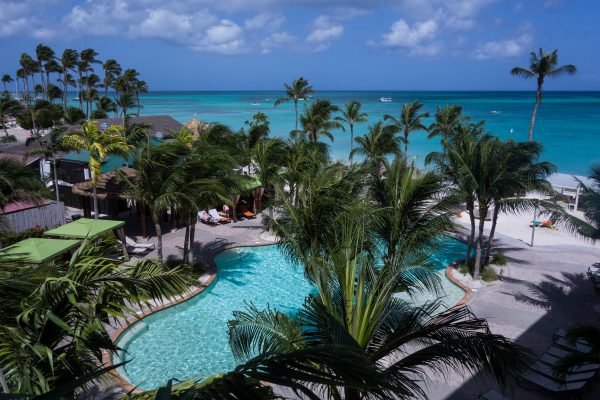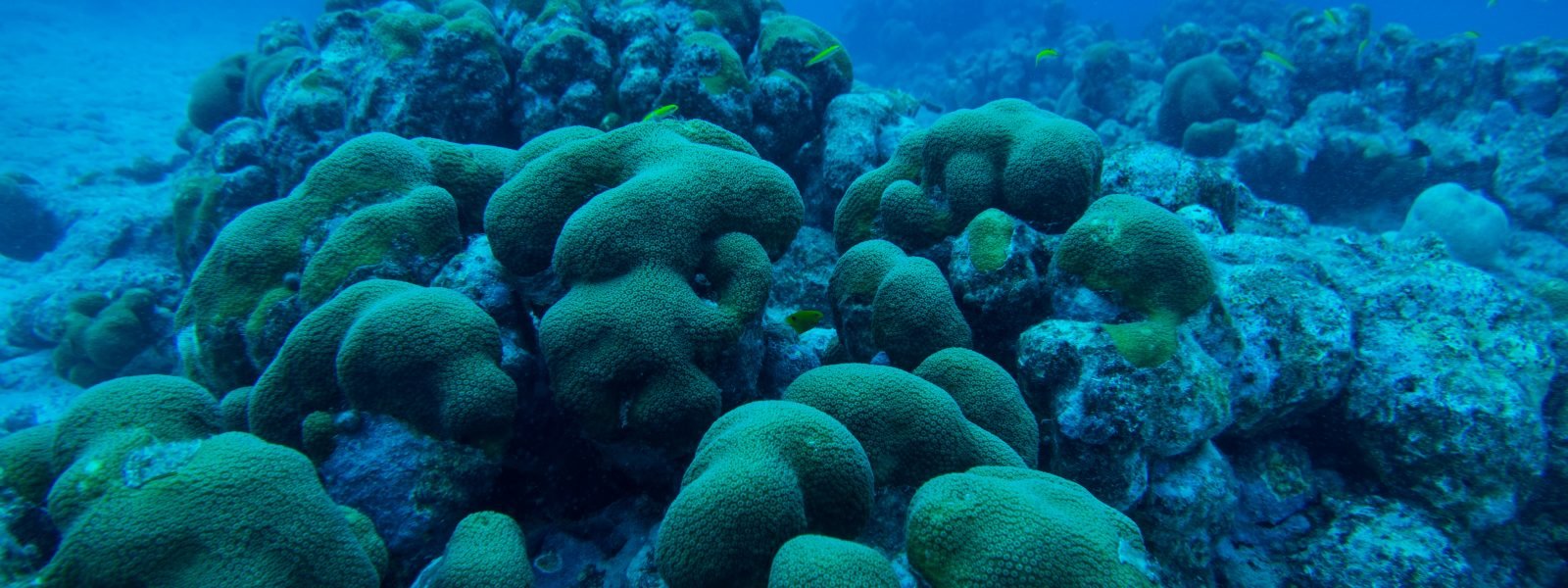The sunrise greeted me at the gate in Fort Lauderdale. While exhausted from the red eye flight that preceded it, it felt like I was getting closer and closer to the Caribbean. I spent my 6-hour layover walking up and down the terminal, drinking repeated café Cubanos. I killed time sitting at the Port Au Prince departure gate and soaking in the Haitian Creole French spoken by old ladies dressed in their Sunday best and guys looking like Congolese sapeurs.
Eventually, it was my turn to board a flight to Oranjestad and after 14 hours of cumulative travel I touched down in Aruba, greeted by a steel drum jam session and huge line at the duty-free store.
Frugal Traveler Tip:
While I typically don’t buy booze at duty free stores, alcohol on Aruba is very expensive. A 1L bottle of Grey Goose was $78 USD at the local grocery but only $40 USD at the duty-free store at the airport. If you are like me and make your own libations for the beach, definitely stop by the duty-free store.
Aruba made some strange first impressions on me. For one, I always assumed Aruba was a tropical island (it is 12o north of the equator after all), but the climate more closely resembled summer in the Colorado foothills than anything else. Instead of tropical jungle, the island is predominantly cacti and divi trees that look like they belong in the Utah desert or the African savannah. I guess the Andes make their own rules. Second, my brain had a tough time processing the cultural melting pot that makes up the people of Aruba. It probably didn’t help that on my first day on this Dutch island, I wound up at a Chinese joint where the predominantly Venezuelan clientele was cheering on an Argentinian magician (Lionel Messi), playing for a Catalonian club, who just won the Spanish Copa del Rey.

I booked this trip on IHG points, so the de facto hotel for this trip was the Holiday Inn in Palm Beach. The first night they didn’t have vacancy, though, so I stayed at the Coconut Inn in Noord. The Coconut Inn was a great little hotel, though nothing luxurious and about 2 miles away from the beach. This brings up the fundamental catch 22 of Aruba when traveling on a budget. If you are staying on the beach (like the Holiday Inn), the hotels and restaurants are going to be very expensive. If I wasn’t booking on points, the Holiday Inn runs $230 USD/night and most restaurants don’t have menu items under $18 USD (there are a few exceptions). Cheaper options exist for both food and lodging inland, but if you want to go to the beach, you need a car because the buses only run down the coast and taxis are expensive. Whoever can solve the transportation paradox can definitely travel Aruba on the cheap.
Frugal Traveler Tip:
For those staying around the Palm Beach/Eagle Beach area, if you have a means of transport, the Super Food Supermarket is a significantly nicer and cheaper alternative than any of the little markets closer to the beaches. The prices rival that of a normal U.S. supermarket and it also has a really delicious food court that serves daily specials for around $5 USD/plate. On the day I was there the special was grilled snapper with rice and carrots.
By day two, the confusion of the first day started to fade and the turquoise waters, pure white sands and palm trees I’ve imagined started to show themselves.

My recent goal in life is to visit as many coral reefs and glaciers as I can before they suffer the same fate as the Truffula trees, and while Aruba isn’t known as a scuba diving destination, I predominantly came to this island for the diving. It’s strange how an island with such beautiful coral reefs spends so much effort promoting their ship and airplane wrecks as the main dive attractions. Don’t get me wrong, the wrecks are very cool in their own right, but reefs like these are becoming pretty rare.
There are only 10 or 11 dive operators on Aruba. I spent the week with Clive from Dive Aruba and I couldn’t be more grateful to him for showing me his beautiful island. I saw a healthy balance of reefs and wrecks and logged a little over 8 hours of cumulative bottom time.
Most of the wrecks on Aruba were intentionally sunk to create tourist attractions. The main exception to this is the SS Antilla, an actual casualty of WW2. It was a 400 ft German cargo ship which happened to be in the Caribbean when WW2 broke out. The Dutch navy was going to seize the ship but the German crew scuttled it as they were surrendering. In the end, it’s about as much of a happy ending as WW2 stories get. No one died (the captured Germans rode out the war in a tropical paradise internment camp in Bonaire) and today dive and snorkel tour operators profit from the wreck and coral reef a few hundred yards offshore.
About a 100 yards from the edge of airport runway, Aruban officials intentionally sunk two airplanes as dive attractions (either someone on the Aruban tourism committee had a very strange sense of humor or no one wanted to deal with the logistics). Legend has it the Convair 400 was confiscated from Pablo Escobar and the YS-11 was a casualty of airline bankruptcy.
The beaches on Aruba are some of the most beautiful I’ve ever seen. Arashi Beach on the northwestern tip of the island is a bit wilder, with what appears to be decent snorkeling and first come, first serve palapas. Palm Beach is where most of the high rise hotels are. It’s a bit more active with bars/restaurants, music and activities. My personal favorites were Eagle Beach and Manchebo Beach. They are a lot quieter and offer long stretches of pristine shoreline.
The windward (east side) side of Aruba has a completely different feel to it. It’s wilder and rougher with a landscape that more closely resembles the desert of Utah than anything else. A good part of the windward side of the island is inaccessible by a 2WD car, except for parts of Arikok National Park which has one paved road.
































































































